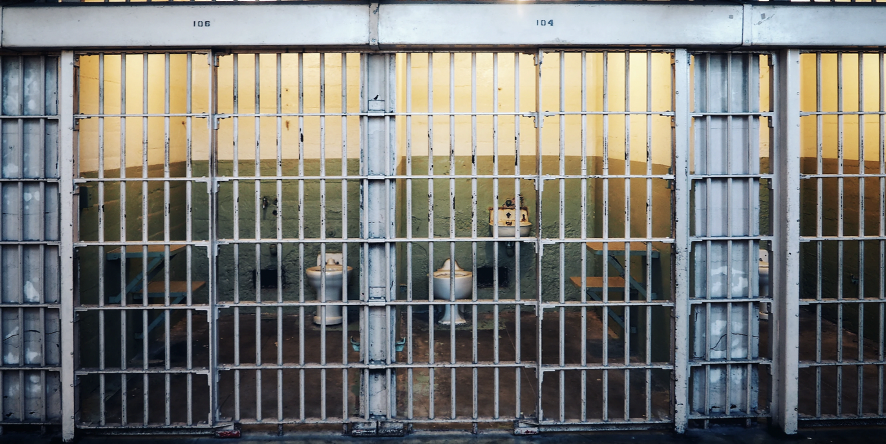By John Brophy, Staff Writer

The most idealistic views of incarceration in the United States center around rehabilitation, which is the idea that an offender can be rehabilitated and ultimately reenter society with effective programming. In reality, rehabilitation is often constrained by economic concerns.[1] Thus, many incarcerated people experience ‘warehousing,’ a term used to describe imposing a lengthy sentence on an individual with the assumption that they will idlily complete the sentence with no material change in their circumstances.[2]
One study tracked the way incarcerated people earn money to make up for the shortcomings in the basic living accommodations provided by carceral institutions.[3] It is important to note that ‘earning’ money in prison is not a right—multiple states facilitate unpaid labor as punishment for a crime.[4] The Marshall Project interviewed multiple incarcerated people and found they work jobs such as landscaping, data entry for the Department of Transportation, and a ‘prisoner observation aid’ for incarcerated people with a suicide precaution.[5] While the job titles appear to be similar to ‘outside’ jobs, they lack the real-world preparation and compensation that make the positions valuable. The American Civil Liberties Union (ACLU) found that the average prison labor job pays “52 cents per hour,” if the job pays at all.[6]
An interview with an individual housed at the El Dorado Correctional Facility in Kansas elicited the conclusion that “if you don’t have the money, you’re going to go without.”[7] Viewed in light of similar lived experiences of incarcerated persons, this is a truism for even the most basic needs within carceral institutions.[8] Thus, incarcerated persons find themselves in a conundrum where they must work tirelessly for menial wages, if any wage at all, to meet their basic human needs. This lifestyle is incompatible with a penological goal of rehabilitating the part of the person that led them to crime.
This issue is compounded when considering which portions of the community interact with carceral institutions.[9] A comprehensive study of the populations of local jails found that many people are cyclical visitors who get detained on nonviolent offenses, and often face consequences beyond incarceration itself, like lost wages and housing.[10]Additionally, people are often incarcerated because they cannot afford the bail assigned to them, exacerbating the interrelationship between financial hardship and incarceration.[11] Viewed at a birds-eye level, substantial portions of the community are being cycled through the carceral system because they have been trapped in a loop of economic insecurity and alleged criminality.
The reality of economic insecurity leading to incarceration has existed since the conclusion of the Civil War.[12]Fortunately, the issue has gained attention, and reform measures were on the ballot in five states in the November 2022 election.[13] Such measures seek to close the loopholes in state constitutions that permit slavery as punishment for crime.[14] However, the slavery-as-punishment loophole remains alive in the US Constitution, until and unless it is amended. Efforts on the November 2022 ballot represent state-level movements to reform state carceral institutional practices.
Absent the stain of slavery as punishment for a crime, incarceration provides a genuine opportunity to intervene in someone’s life. One story of an incarcerated person at SCI-Chester in Pennsylvania exemplifies this opportunity.[15]Jy’Aire Smith-Pennick pled guilty to murder in October of 2017; after three years of ‘control and confrontation’ incarceration in Delaware, Smith-Pennick successfully received an interstate transfer.[16] After transferring, Smith-Pennick found himself with access to drug and trauma treatment that he states helped him gain control of his own rehabilitation.[17] As an incarcerated person serving a 27 year sentence, Smith-Pennick said that “sending someone to a prison without quality programs, mental health resources and opportunities to build skills is like putting a child on punishment without giving them an explanation.”[18] Upon reflecting on the programming and time spent in prison, Smith-Pennick considers his incarceration a “blessing in disguise.”[19] While Smith-Pennick’s story is an inspiration, it only exists when we provide opportunities to grow, which is mutually exclusive with the tradition of ‘warehousing.’
Recidivism is one socioeconomic measure of the rehabilitative effect of incarceration. Like many rehabilitative efforts, vocational and educational programming costs more than ‘warehousing.’ The ACLU found that short-term spending on vocational programs within carceral institutions results in long-term reductions in recidivism, which benefits the entire community.[20] Considering the tax burden and substantial public interest in having a functioning society, rehabilitation within carceral institutions needs to be a major priority to avoid a perpetual cycle of mass incarceration.
[1] https://www.themarshallproject.org/2022/08/04/prison-money-diaries-what-people-really-make-and-spend-behind-bars?utm_source=newsletter&utm_medium=email&utm_campaign=planetmoney&utm_source=npr_newsletter&utm_medium=email&utm_content=20220811&utm_term=7098628&utm_campaign=money&utm_id=5038570&orgid=454&utm_att1=
[2] https://www.ojp.gov/ncjrs/virtual-library/abstracts/warehousing-violence
[3] https://www.themarshallproject.org/2022/08/04/prison-money-diaries-what-people-really-make-and-spend-behind-bars?utm_source=newsletter&utm_medium=email&utm_campaign=planetmoney&utm_source=npr_newsletter&utm_medium=email&utm_content=20220811&utm_term=7098628&utm_campaign=money&utm_id=5038570&orgid=454&utm_att1=
[4] Id.
[5] Id.
[6] Id.
[7] Id.
[8] Id.
[9] https://www.vera.org/publications/incarcerations-front-door-the-misuse-of-jails-in-america
[10] Id.
[11] Id.
[12] https://apnews.com/article/2022-midterms-13th-amendment-slavery-4a0341cf82fa33942bda6a5d17ac4348
[13] Id.
[14] Id.
[15] https://www.themarshallproject.org/2021/06/10/i-hate-to-admit-it-but-prison-is-a-blessing-in-disguise
[16] Id.
[17] Id.
[18] Id.
[19] Id.
[20] https://www.aclu.org/report/captive-labor-exploitation-incarcerated-workers?redirect=captivelabor